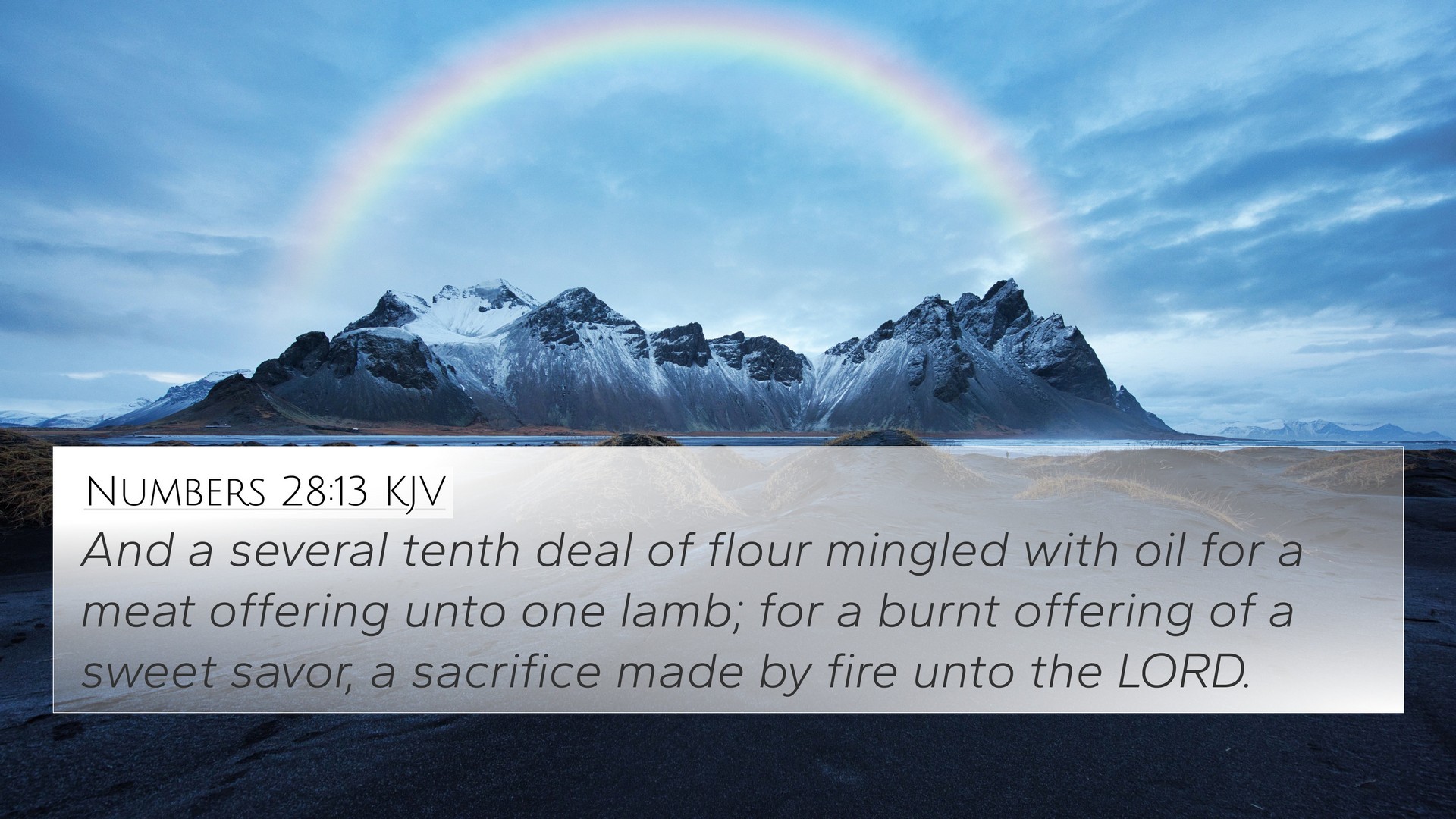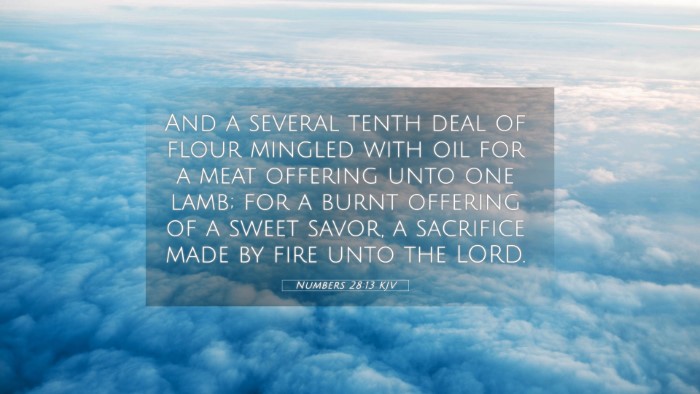Understanding Numbers 28:13
Numbers 28:13 states:
"And one kid of the goats for a sin offering unto the Lord shall be offered, beside the continual burnt offering, and his drink offering."
Verse Explanation
This verse is part of God's instructions regarding the offerings to be made in the tabernacle, specifically in connection with the daily burnt offering and the additional offerings made on special occasions.
Insights from Commentaries
- Matthew Henry: Henry emphasizes the importance of the sin offering as a means of atonement for the people of Israel. He notes that the kid of the goats signifies the need for sacrifice to cover sin, reinforcing the concept that sin cannot be overlooked but must be addressed through offering.
- Albert Barnes: Barnes points out the necessity of regular offerings, highlighting that they symbolize the constant need for redemption and the acknowledgment of sin. He draws attention to the distinction between the regular burnt offerings and additional sin offerings, illustrating the ongoing nature of worship and repentance.
- Adam Clarke: Clarke adds that the presence of a goat for sin offering signifies a transfer of guilt from the people to the animal. He also notes that the drink offering, which accompanies this act, serves as a symbol of devotion and the people’s relationship with God.
Thematic Connections
This verse connects to various Biblical themes, including:
- Sacrifice and Atonement: The repeated theme of sacrifices throughout the Old Testament and their foreshadowing of Christ's ultimate sacrifice.
- Worship Practices: The prescribed methods for worship, emphasizing the structure and intention behind offerings to ensure community purification and closeness to God.
Bible Verse Cross-References
Here are several key cross-references that relate to Numbers 28:13:
- Leviticus 4:24: Discusses the sin offerings and their means of atonement.
- Hebrews 9:22: States that without the shedding of blood, there is no forgiveness of sins, echoing the necessity of sacrifice.
- Romans 6:23: Specifies the wages of sin as death, which underlines the importance of substitutionary offerings.
- 1 Peter 2:24: Refers to Christ bearing our sins in His own body, drawing a direct line to the significance of sin offerings.
- Exodus 29:38-42: Details the continual burnt offering, paralleling the need for regular sacrifices.
- Isaiah 53:6: Prophesies the Lord laying on Him the iniquity of us all, foreshadowing God's ultimate act of grace.
- Hebrews 10:12: Discusses Christ offering Himself as a single sacrifice for sins, contrasting the Old and New Covenant principles of sacrifice.
Applications and Interpretations
For believers today, Numbers 28:13 serves as a reminder of the ongoing need for confession and reliance on Christ as our ultimate sin offering. The rituals prescribed to Israel reflect the serious nature of sin and the measures taken to reconcile with God.
Cross-Referencing Biblical Texts
This verse can be further explored through tools like Bible concordance and cross-reference guides. These resources enable us to identify thematic connections, enrich our understanding, and enhance our spiritual studies. Engaging with different scriptures that relate to one another invites a deeper comprehension of God's narrative throughout the Bible.
Conclusion
In summary, Numbers 28:13 encapsulates the significance of sacrifices in the Old Testament and their implications for New Testament believers. Through comparative Bible verse analysis, we see how themes of atonement, worship, and redemption harmonize across the Scriptures, illustrating the cohesive nature of God’s revelation to humanity.


